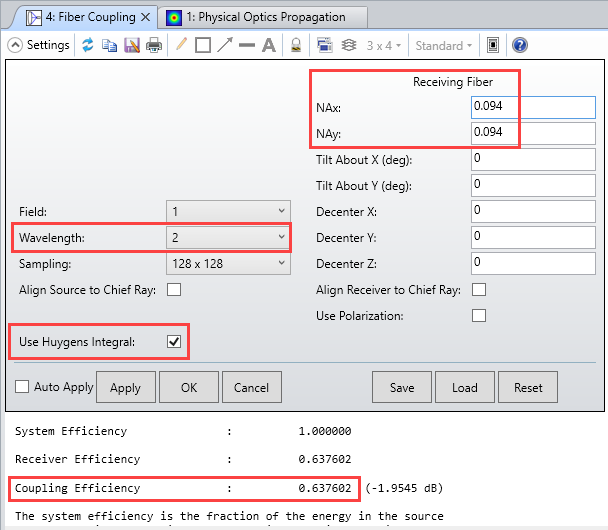Hi,
I am a Phd student at the Paris observatory working on 3D printed microlens on a single mode fiber array. The objective is to design a microlens focusing a uniform beam of 250um diameter into our PM630 fiber (NA:0.12, MFD : 4.5 ± 0.5 µm @ 630 nm) with an optimized coupling efficiency over the 600nm to 900nm spectral band.
I have a hard time to optimize the coupling efficiency with POP because, I think, the beam is too fast (warnings in the Prop report: **** WARNING: Pilot beam waist smaller than wavelength detected, scalar diffraction propagation algorithms may be inaccurate). I used the ‘use ray to propagate’ function but as the beam remain really fast at the image plane, I don’t get accurate results with POP and can’t optimize the coupling efficiency with POPD.
I could really help to have some leads to follow in order to optimize the coupling efficiency.
Regards,
Manon




